 | TODAY IN SCIENCE HISTORY NEWSLETTER - 28 NOVEMBER |
| Book of the Day | ||
|
| Quotations for Today | |
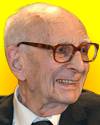 | Scientific knowledge advances haltingly and is stimulated by contention and doubt. |
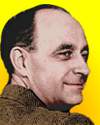 | When asked what he meant by a miracle: Oh, anything with a probability of less than 20%. |
| A cell is regarded as the true biological atom. | |
| Quiz | |
| Before you look at today's web page, see if you can answer some of these questions about the events that happened on this day. Some of the names are very familiar. Others will likely stump you. Tickle your curiosity with these questions, then check your answers on today's web page. | |
| Births | |
 | Russell Alan Hulse, born 28 Nov 1950, is an American physicist who in 1993 shared the Nobel Prize for Physics. He co-discovered (1974) the first of a type of two celestial bodies so close they are separated by only several times the distance between the moon and the earth. This was the first indirect proof of the existence of the gravitational waves, as predicted by Albert Einstein in his theory of relativity. What type of celestial bodies did they discover? What type of celestial bodies did they discover? |
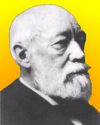 | On 28 Nov 1837, John Wesley Hyatt was born, an American inventor and manufacturer who was a pioneer of the plastics industry. He developed the first synthetic plastic, which he patented in 1870. What trademark name did he give his new plastic? What trademark name did he give his new plastic? |
| Deaths | |
 | Enrico Fermi (1901-1954) was an Italian-born American physicist who was awarded the 1928 Nobel Prize for Physics in 1938 as one of the chief architects of the nuclear age. He was the last of the double-threat physicists: a genius at creating both esoteric theories and elegant experiments. In 1933, he developed a theory postulating the existance of a new particle, before it was discovered. What did he name this new particle? What did he name this new particle? |
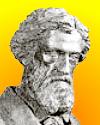 | Sir Charles Thomas Newton (1816-1894) was a scientist who bears the same surname as another famous scientist, but did his work in another field. What was the scientific field of Sir Charles Newton? What was the scientific field of Sir Charles Newton? |
| Events | |
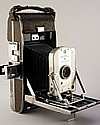 | On 28 Nov of a certain year, the first Polaroid Land Camera first went on sale, at a Boston department store. The 40 series, model 95 roll film camera went on sale for $89.75. This first model was sold through 1953, and was the first commercially successful self-deleveloping camera system. A sepia-coloured photograph took about one minute to produce. In which decade was the Polaroid Land Camera placed on sale? In which decade was the Polaroid Land Camera placed on sale? |
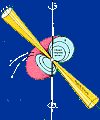 | On 28 Nov 1967, the first pulsating radio source (pulsar) was detected by an alert female graduate student, at the Mullard Radio Astronomy Observatory, Cambridge, England. The discovery came by using a special radio telescope, a large array of 2,048 aerials covering an area of 4.4 acres. Can you name this scientist? Can you name this scientist? |
| Answers |
| When you have your answers ready to all the questions above, you'll find all the information to check them, and more, on the November 28 web page of Today in Science History. Or, try this link first for just the brief answers. Fast answers for the previous newsletter for November 27: ampere • Swedish • motions of sunspots • horse-drawn vehicles • decade containing the year 1834 • “phossy jaw”. |
| Feedback |
 If you enjoy this newsletter, the website, or wish to offer encouragement or ideas, please send feedback by using your mail reader Reply button. If you enjoy this newsletter, the website, or wish to offer encouragement or ideas, please send feedback by using your mail reader Reply button. Your click on a StumbleUpon, Google+ or Facebook social button on the site webpages is also a welcome sign of appreciation. Thank you for using them. |
| Copyright |
| To find citations for quotations go to the corresponding webpage by clicking on the “quotes” balloon icon. Sources for the thumbnails appear on today's webpage with the corresponding item. � This newsletter is copyright 2013 by todayinsci.com. Please respect the Webmaster's wishes and do not put copies online of the Newsletter � or any Today in Science History webpage. (If you already have done so, please remove them. Thank you.) Offline use in education is encouraged such as a printout on a bulletin board, or projected for classroom viewing. Online, descriptive links to our pages are welcomed, as these will provide a reader with the most recent revisions, additions and/or corrections of a webpage. For any other copyright questions, please contact the Webmaster by using your mail reader Reply button. |
--
If you do not want to receive any more newsletters, Unsubscribe
To update your preferences and to unsubscribe visit this link


Δεν υπάρχουν σχόλια:
Δημοσίευση σχολίου